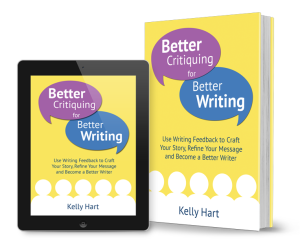 When you hear someone say show, don’t tell they are referring to a common story-telling device used in writing.
When you hear someone say show, don’t tell they are referring to a common story-telling device used in writing.
Generally speaking it’s sound advice.
The problem with this advice is the ‘don’t tell’ part.
What it really should say is show the important parts of the story, tell the details readers won’t care about.
We will explore this later on, but for now let’s focus on the show part of the rule.
Showing versus telling
Showing helps your reader create pictures in their mind. It allows them to feel like they are involved in the action.
Let’s use an example.
This is telling:
Miss Marley was an old, spiteful woman.
Here we are told that Miss Marley is old, spiteful and a woman.
This is showing:
Miss Marley pulled her cardigan closer around her shoulders before she grabbed her cane and hobbled towards the window. As she shut the window she could see the neighbour’s cat slinking its way into her garden. She raced towards the front door, forgetting her aches and pains in the rush to stop that damn cat from dropping its load.
‘Get away from my garden, you filthy beast,’ she yelled, whacking her cane against the screen door.
I didn’t tell you that Miss Marley was old. I showed it through details such as the cane and how she walked towards the window. Even the details about her cardigan hint that she is an older woman and frail. I show you that Miss Marley isn’t above scaring a cat which clues the reader in to her spiteful personality.
When you should break the show, don’t tell rule
A lot of writers are confused by the show, don’t tell rule and think this should be applied to every part of their writing; this unfortunately can ruin the story and plot by drawing it out and slowing down the pace too much.
Show, don’t tell is a rule that should be applied carefully and thoughtfully.
Sometimes you need to tell information to your reader to move them on to the next section without exploring boring details that don’t move your story forward.
Take for example a simple dinner scene.
The characters are sitting around chatting and eating, but nothing interesting happens until dessert. Your readers don’t want pages of detail about boring dinner conversation; they want to skip straight to dessert where the interesting stuff happens.
It’s your job as a writer to get them to that point as quickly as possible.
How do you do this?
You could simply say:
Rosie and Tom sat down for dinner but it wasn’t until dessert that Rosie handed a small box to Tom.
An easy way to think of telling is to use it as a transition. It moves you forward and away from things that will bore your readers with speed.
How do you know when to apply telling instead of showing?
Well, it’s a matter of judgement. Reading books will give you examples of how to use telling, which will help you judge when you should use this device in your own writing.
A way to help you judge when you might need to replace some showing with telling is to read your manuscript out loud. If the pace feels too slow, you may need to speed it up by replacing some showing with telling.
If the information you’re showing to the reader isn’t information they need and doesn’t move your story forward, think about how you can simplify it and rewrite that section.
In the end your manuscript needs to feel balanced.
Showing is important because it reminds us not to use information dumps and it draws the reader into the action, but telling is needed to move past the sections that will bore your readers.
Here’s to your writing!
Kelly






Connect With Kelly